Trek releases significantly lighter Domane SL and SLR
This article originally appeared on Velo News
Trek today unveiled a new version of the Domane, the American brand's endurance model originally designed to tackle Paris-Roubaix -- but which is equally adept at handling deteriorating county roads.

Simplified IsoSpeed
A core feature introduced on the original Domane was IsoSpeed, which builds compliance into the frame by decoupling the seat tube from the top tube. It allows the seat tube to flex, better absorbing impacts from the road. For classics specialists, from Fabian Cancellara who helped develop and test the tech a decade ago, to Elisa Longo Borghini who won Paris-Roubaix in the spring, the Domane and its IsoSpeed tech is the bike of choice for cobbles.
The third generation Domane featured adjustable IsoSpeed, as well as a fixed front IsoSpeed. After examining how riders use IsoSpeed, Trek realized that most people set the IsoSpeed to the most compliant setting and leave it be.
For the fourth generation Domane, Trek has decided to forego the adjustability, and in the process has saved more than a few grams from a bike that counts higher weight among its few downsides. The front IsoSpeed has gone as well -- a move Trek says reflects the ability of wide tires at lower pressures to provide the same level of comfort -- saving further weight.
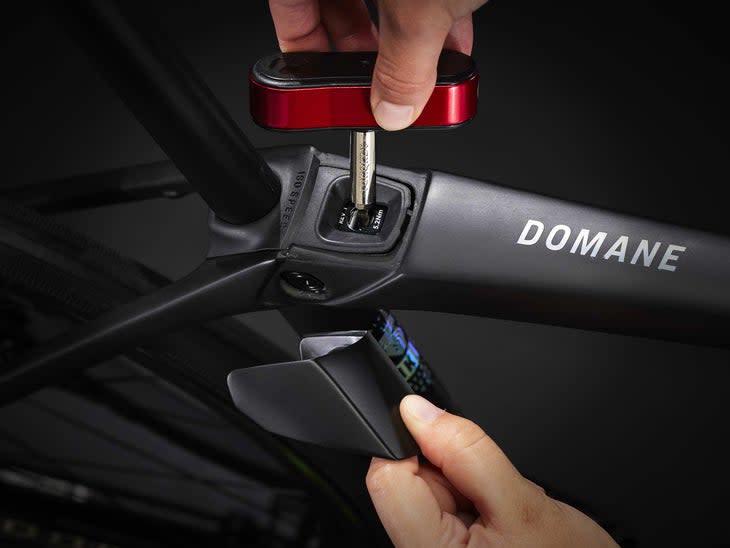
Trek says the frame is now a whopping 300 grams lighter.
The weight savings don't stop at the frame, either. Built with newer lightweight parts, the latest generation SLR version saves another 400 grams through its specification. The lightest full build available is the SLR 9 at 7.25kg (15.98lbs). On the other end of the lineup, the entry level SL 5 has come down to 8.93kg (19.69lbs) from a third generation weight of over 21 pounds.
The IsoSpeed update echoes the new Madone aero bike released by Trek this summer which also abandoned an adjustable version in favor of a fixed one. However, with the Madone Trek opted for the other side of the spectrum, fixing the decoupler at the stiffest setting.
Improved aerodynamics
Thanks to updated Kammtail tube shapes, the new Domane has become more aerodynamic than its predecessor. Trek has also integrated the cockpit, routing the cables through the headtube for a sleeker look.
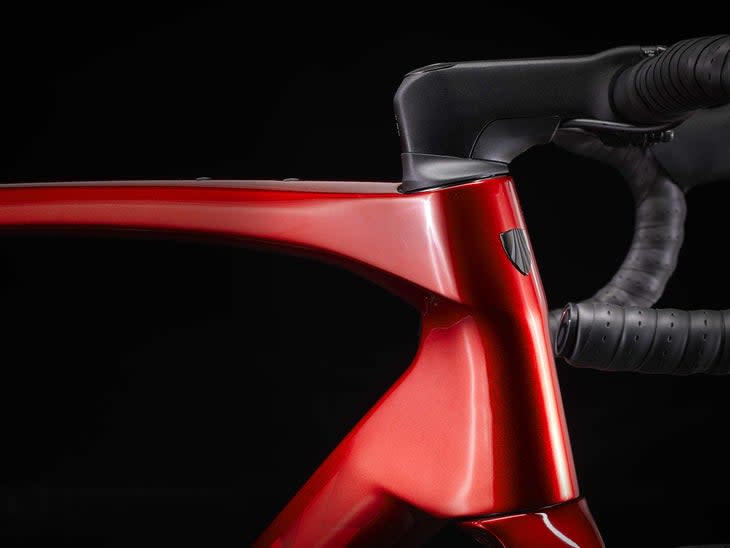
Same massive tire clearance
As with the third generation Domane, the latest models are officially rated to handle 38c tires. Yes, you read that right. Can you fit bigger? I have seen it done on the previous version.
Each model ships with 32mm tires, taking advantage of all that clearance.
Ample storage options
The new Domane carries over the hidden storage compartment within the downtube, accessed under the bottle cage. It remains a simple, elegant solution for stashing a flat kit or whatever else fits in approximately the same space as a saddle bag.
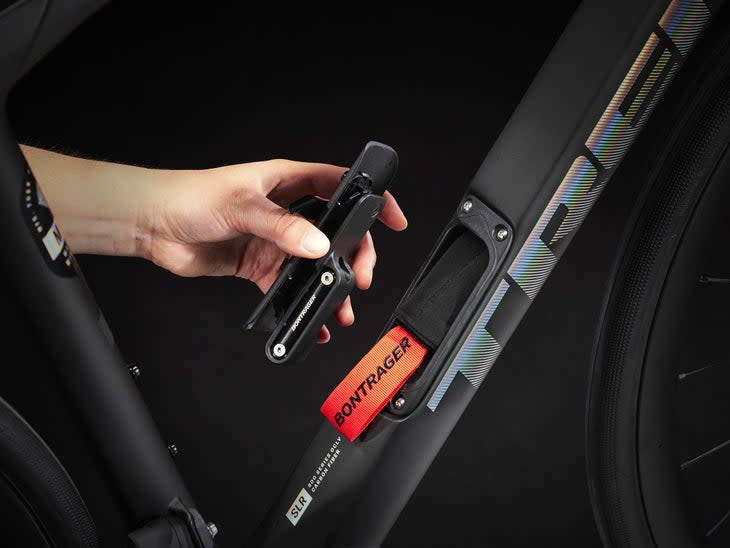
New this time around, however, is top tube mounts. The Domane's massive tire clearance (it can fit low profile tread 40mm tires, albeit with tight frame clearance) makes it practically a gravel bike already. Having the option to add bags enables it to support big days and adventure rides.
The hidden fender mounts remain in the new generation as well, making the Domane among the most versatile road bikes with a performance tilt out there.
RSL version to race like a pro
As before, the SL and SLR versions share all the same features, differing only in material makeup -- and therefore weight. The SL gets 500 series OCLV carbon while the SLR gets top shelf OCLV 800 carbon.
Trek athletes are riding a slightly different Domane at Paris-Roubaix, and it's available to us regular folk as a frameset. Called the RSL, it is purpose built and really only sees the light of day for Roubaix, not even the Tour of Flanders.
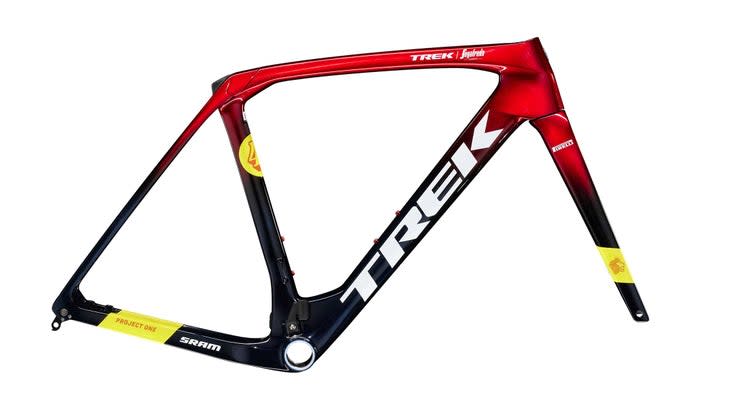
It features a more aggressive H1.5 geometry, (compared to the standard endurance geometry of the Domane), drops the downtube storage to save 100 grams (who needs it when a team car has a spare bike waiting?), and maxes out at 35mm of tire clearance, helping save weight.
Does it make sense for the majority of people interested in the Domane to buy? Probably not. It's a less endurance oriented fit, meaning less comfortable, and gives up some of the versatility and features of the standard version. But is it cool to have the option to ride the same bike as the pros? Definitely.
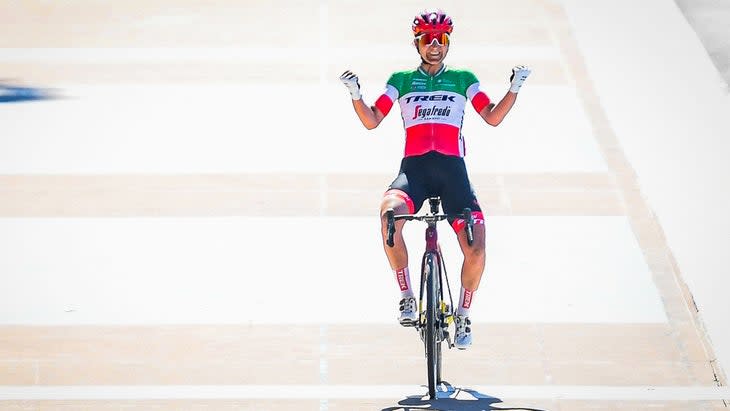
Geometry

Pricing and Models
Domane SL 5 – $3,499.99
Domane SL 6 – $4,699.99
Domane SL 6 eTap – $5,299.99
Domane SL 7 – $6,829.99
Domane SL 7 eTap – $7,499.99
Domane SL Disc frameset – $2,499.99
Domane SLR 6 – $7,999.99
Domane SLR 6 eTap – $8,399.99
Domane SLR 7 – $8,549.99
Domane SLR 7 eTap – $9,699.99
Domane SLR 9 – $12,749.99
Domane SLR 9 eTap – $13,199.99
Domane SLR frameset – $4,199.99
Domane RSL frameset – $4,199.99
More info: trekbikes.com
For exclusive access to all of our fitness, gear, adventure, and travel stories, plus discounts on trips, events, and gear, sign up for Outside+ today.

